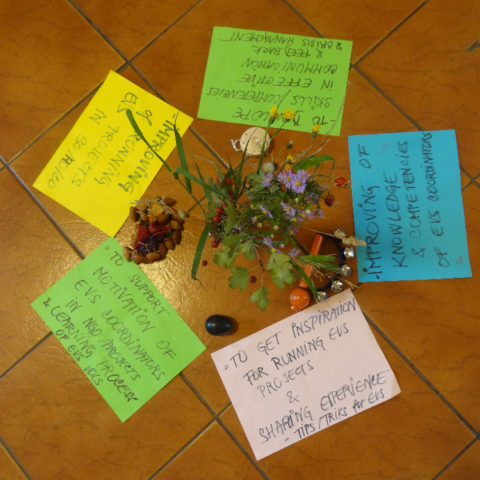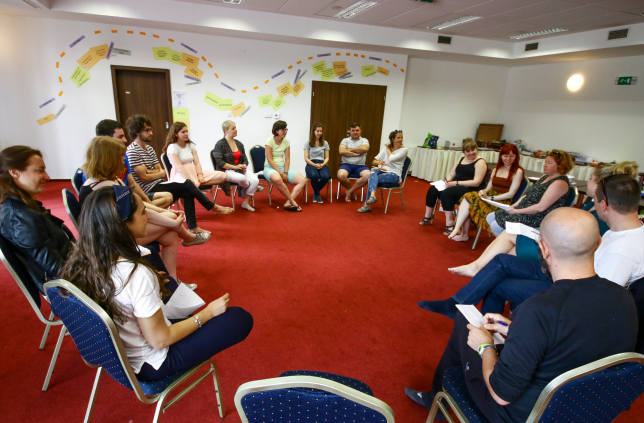History of the Methodology
The Council or Circle is a method based on the ancient human practices, commonly found in many cultures, of gathering to discuss and decide on common issues. According to Christina Baldwin, in the book The Circle Way, a Leader in every Chair, “what transforms a meeting into a circle is the willingness of people to shift from informal socializing or opinionated discussion into a receptive attitude of thoughtful speaking and deep listening and to embody and practice the structures outlined.”
Because an open group dialogue requires a mindset of openness, respect and empathy from all participants. The Way of Council establishes a handful of rules, procedures and principles that foster that state of mind and promotes a fluid, engaging and truly participative process.

Step by Step Instructions
A Council may have several components. These components are meant to create an optimal atmosphere for authentic communication. You can use some or all of them, adapting it to your context.
- Intention – At the beginning, the person who is hosting the council explains the reasons and the expected outcomes of the activity.
- Welcome start-point – The welcome moment is meant to bring participants’ focus to the council and to stimulate the right mood. It can be a moment of silence, a poem reading, a song or whatever invites people to be in a calm and open state of mind.
- Center and Check-in/Greeting – The center of the circle can be a symbolic space and can be used to remind participants of the purpose of the meeting. You can use flowers, spirals, candles or whatever shapes or objects embody the intention of this council. Checking-in implies that each participant has the chance to briefly share their expectation, contribution or personal story. As people speak they can also place an object in the center as a symbol of their commitment to the process.
- Agreements – Making agreements together helps the group to establish common ground and reinforces a sense of respect and collaboration. Agreements can include: confidentiality, curiosity, compassion, etc.
- Three Principles and Three Practices – The most commonly used council principles are: Shared leadership, shared responsibility and reliance on wholeness. The three practices often presented are: to speak with intention, to listen with attention and to tend to the well-being of the circle.
- The dialogue – This is the main objective of the council, for people to have a mindful conversation. The dialogue in a council can happen in different forms:
- Using a Talking Piece: a talking piece is an object (e.g. a stick or a piece of tissue) that allows its holder to speak. It can be used when collecting everyone’s contribution or during the check-in/out;
- Conversation Council: when participants can take part and interact freely in a debate, sharing their views and opinions;
- Reflection or Silent Council: this is used to give individual time to reflect about a given question or standoff or to help the group re-align with the council’s purpose.
- Guardian of the Process – The role of guardian should be given to one of the participants. This role can stay with one person or rotate among more participants. The task of the guardian is to observe the process and ensure the purpose and principles are being respected. At any moment the guardian can use a gentle sound (rattle, bell or other) to call a pause where everyone should stop, stay in silence and take a breath (for approx. one minute). This can be helpful to bring the group back to the desired mind-set. The guardian should then repeat the sound, explain why the pause was called and allow the group to re-start the conversation.
- Check-out and Farewell – Check-out is again a moment where all participants are given the space to share how they feel, what they’ve learned or what they take from the council experience. The host can then close the council with a farewell word or a minute of silence.

Practical assurance of the council
When you might use it: When you want to host a dialogue in a group, ensuring space for everyone’s participation.
Time Required: 1 – 2h
How many people involved: It can vary, we advise a group of 5 to 35 people.
Target group: You can use this technique with any age group, just adjust the length, introduction and focus of the circle to suit.
Space and materials: This method requires a quiet space where all participants can sit in a circle. It is advised to provide objects for the center of the circle or a Talking Piece (both optional).
Variants of use
You can encounter the Council in any kind of educational activity with young people, for example at summer camps, youth exchanges or training sessions. However, Councils are also being used extensively in schools for class discussions (e.g. to start and end the working week, to plan or evaluate learning objectives, or to resolve communication problems or conflicts in the class).
More information about the methodology:
- http://peerspirit.com/wp-content/uploads/2014/06/PeerSpirit-Circle-Guidelines2010.pdf
- http://waysofcouncil.net/wp-content/uploads/2017/02/Introduction-to-Council.pdf
- http://waysofcouncil.net/posts/circle-ways/
Author
The methodological description is based on the text produced by Anita Silva. Developing Youth Work Innovation. E-handbook. Project Future Labs. Erasmus+, KA2, 2019. Publication of Humak University of Applied Sciences, page 27.






